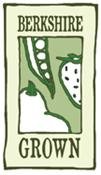Tasty Food Books
Food as a pastime--food as a way of life--food as an obsession came to fruition in the 1980’s. We lived in New York City then, and were educated by columns from Molly O’Neill, whose tenure as a food writer at The New York Times coincided happily with the emergence of chefs as the new superstars. A comment she made at a panel for the New York City chapter of Culinary Historians in the 1990’s made quite an impression on me. O’Neill pointed out that in Italy, a fiercely class-based society, everyone eats the same food. Yet in America, a vociferous proponent of equality, one might say “Tell me what you eat and I’ll tell you where you are in the pecking order.” She said, “When McDonald’s starts serving salads with balsamic vinegar, it will disappear from fancy restaurant menus.” How very prescient.
At some point O’Neill seemed to disappear and I missed her. Now, though, you can meet up with her again in her autobiography Mostly True: A Memoir of Family, Food and Baseball, a perfectly splendid book. It’s a treat to read her account of growing up the elder sister of five boisterous brothers, one of whom is former Yankee star Paul O’Neill; of her development as a chef in Northampton, Provincetown and Boston; and, of course, the time she spent covering New York food as it exploded with creativity and snob appeal. It’s not just food that she writes about so convincingly. Reading about her life as a burgeoning feminist in Northampton is hilarious in a time-warp way.
After being absent from the literary scene for far too long, O’Neill seems back with a vengeance since about a year after her autobiography came out she edited American Food Writing, an anthology extending from colonial times to the present. We don’t see much of her in the book, but we get the benefit of her well-developed food sensibilities in the choices she made for excerpts. Unlike her autobiography, one wouldn’t sit down and read this volume straight through. But it’s fun to keep on the nightstand, to read it in small bites instead of one huge gulp.
Right after reading Almost True I read Thomas McNamee’s biography, Alice Waters and Chez Panisse, a thoroughly delightful romp through the history of one of America’s most famous, and certainly most iconic, restaurants. Luckily, for those of us with a penchant for the salacious in biographies, McNamee satisfies with sundry stories of the sex, drugs and rock ‘n roll that accompanied the establishment of Chez Panisse. I particularly liked the meaty descriptions of the many chefs who cooked there, of the ethical dilemmas Waters and her staff dealt with, and, to be sure, details of the foraging sorties that led to the current emphasis on “buy local.”
Over the weekend I read Russ Parsons’s new book, How to Pick a Peach: The Search for Flavor From Farm to Table. Parsons is the food editor and chief food writer for The Los Angeles Times, whose name you might recognize from the occasional article the Berkshire Eagle publishes in its food section. Like his earlier book, How To Read a French Fry, this one provides well written and interesting information about sustainable farming. And like the earlier one, there are about 100 recipes.
This being a book on fruit and vegetables, Parsons divides it into the four seasons, with botanical and culinary information on a wide variety of produce we all eat (or should eat). I took an immediate fancy to the book because the very first entry is on artichokes, a food I love to eat but am terrified to prepare. He made it seem so easy that I’m thinking it’s finally time to relax enough to learn to make them. In each entry, the reader learns where the produce is grown, and how to choose, store and prepare it.
One aspect of our food system is made very clear—more than half of American produce comes from California. Internalizing that fact is sobering. I need to think it about that, and figure out what it means in terms of “buy local.” If, as in our case, “local” is 3000 miles away from the major food source.
Wednesday, June 27, 2007
Subscribe to:
Post Comments (Atom)


No comments:
Post a Comment